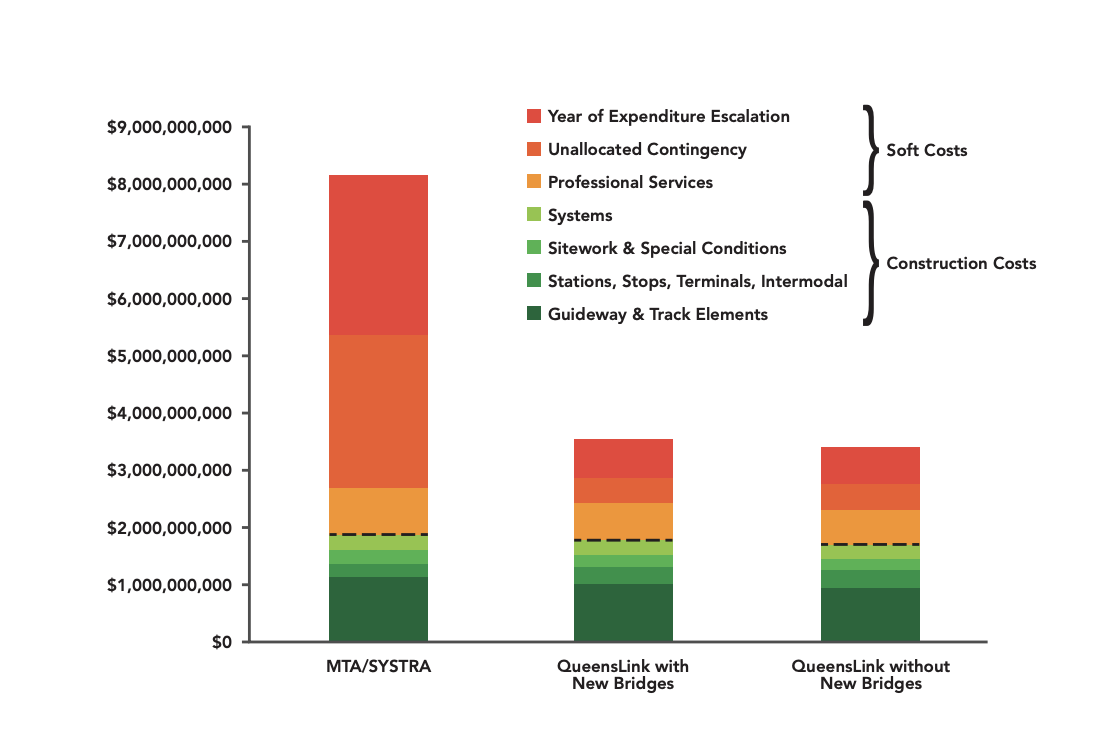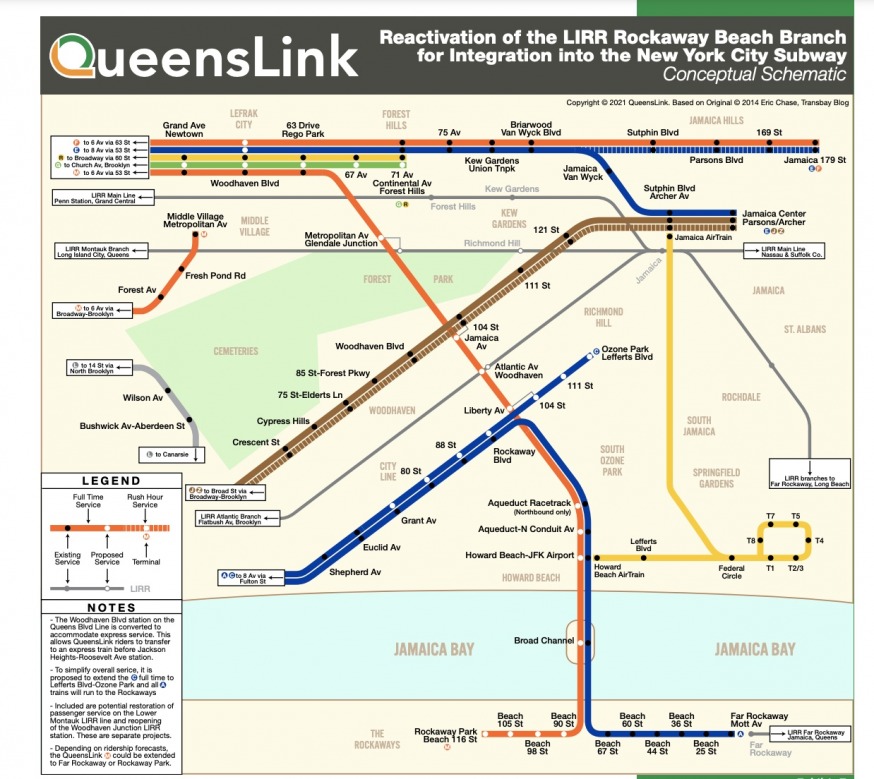
Rendering of the QueensLink proposal (QueensLink)
July 16, 2021 By Allie Griffin
Advocates who are calling for a north-south subway line in central Queens say the proposal is more feasible than what the MTA estimates.
A new report commissioned by supporters of the proposal, dubbed the QueensLink Corridor, found that the project would be billions of dollars less than what the MTA has pegged it to be.
The QueensLink Corridor would create a north-south subway line through central Queens that would connect Rego Park to Ozone Park by extending the M line. The line would use 3.5 miles of abandoned LIRR tracks that were once part of the Rockaway Beach Branch line.
The MTA published a study looking at the cost and feasibility of the project in 2019. The study, completed by Systra Engineering, estimated the cost would be about $8.1 billion.
However, the study commissioned by QueensLink supporters and completed by transportation firm TEMS Inc., found the cost to be between $3.4 and $3.7 billion.
The advocates’ report also included the cost of creating green space along the railway line.
The cost difference lies not in the actual price of construction, but in what the TEMS’ report calls “soft costs” — things like professional services and contingency factors.
TEMS said the estimates of such costs “are out of line with industry standards.”

Cost comparisons of MTA study and QueensLink study (QueensLink/ TEMS study)
The QueensLink project proposes rerouting the M line southbound from the 63rd Drive – Rego Park station along a new 3.5 mile rail where the idle LIRR tracks lay. The new M rail would connect to the A train line at Ozone Park, where it would extend to Rockaway Park — replacing the shuttle train that runs from Broad Channel to Beach 116th Street.
It also proposes extending the G train to Forest Hills in place of the rerouted M train.

QueensLink proposed subway map (QueensLink/ TEMS study)
The study also found that the creation of the QueensLink would create up to 150,00 new jobs over the course of its lifetime.
A spokesperson for the MTA declined to comment.
The study was first reported by Streetsblog.
One Comment

Mayor de Blasio, Governor Cuomo, MTA Chairman Foye, Senators Schumer and Gillibrand have never expressed any serious interest in support of this project. They all have other higher priorities. You also need a transportation agency to serve as the project sponsor. This is necessary to apply for federal funding. Both the MTA and NYCDOT have indicated no interest in sponsoring or pursuing funding from City Hall, Albany or Washington. Either agency would have to ask the Federal Transit Administration for permission to enter the project into the New Starts/Core Capacity national discretionary grant program.
A local matching share in the billions would be needed from the MTA or NYCDOT to obtain a FFGA from the FTA to pay for the project. Don’t be surprised when this project is not included in the upcoming MTA Twenty Year (2020 – 2040) Future Capital Needs Assessment Plan. It was promised to be released by December 2019.
No one has offered millions to pay for the next step, which is a formal Environmental Review. Without this, the project will continue to be dead and buried. The environmental review process would have to follow the National Environmental Protection Act. This would be part of the formal process to become eligible for FTA funding.
(Larry Penner is a transportation advocate, historian and writer who previously worked for the Federal Transit Administration Region 2 New York Office0